by Rodrigo Silva e Souza – Vice President of Marketing for Embraer Commercial Aviation
The dust is still settling across the aviation landscape six months after the disappearance of passenger traffic and retrenchment of airlines. Ultra-large capacity jets are in storage, some likely never to fly again. Networks and frequencies are cut back. Staff is gone. Carriers are a fraction of their former size.
Yet there are signs that the industry is heading in a new direction. Those changes, as we see them, will influence the sizes, mix, and number of aircraft in airline fleets. Here are the main drivers shaping the future.
Reduced Demand
International border closures, a general reluctance to travel until there is effective testing and mass immunization, limited medical insurance coverage for covid-19, restrictions on group gatherings (which has destroyed the convention business,) unemployment, economic uncertainty, and mandatory quarantines are all contributing to weak demand. Even the so-called “travel bubbles” among low-risk countries are yet to emerge.
Remote Work Culture
The pandemic accelerated the rise of digital telecommunication technology. It’s likely that a percentage of company employees will never return to their communal offices and will continue to work more efficiently from home. Connecting in real-time with colleagues and clients around the globe on a screen, while not the same as face-to-face meetings, has implications for the future network and fleet planning.
The Business Travel Component
Business travelers, especially those who pay high ticket prices, will be slow to return to the skies. Premium cabins on international flights are especially hard hit. Corporate travel directives preventing employees from traveling, arrival quarantines, conference cancellations, and closed borders mean airlines have lost a huge percentage of flight revenue that contributed to the bottom line.
Replacing that lost business traveler revenue with predominantly discounted leisure tickets given the overall reduction in demand will be a challenge. The combination of a fleet of aircraft with too many seats, too few passengers, and low fares isn’t a viable business.
All of these suggest the time is now for airlines to re-think their business models and right-size their fleets, again. A one-size-fits-all approach won’t work when the environment is continually evolving, and the leisure/business passenger mix is reset.
Rightsizing – Round 2
We identified a gap between regional jet and large narrow-body jet capacity when we launched our E-Jets family back in 2000. It’s why we coined the phrase tap the gap and introduced the term right-sizing. Twenty years ago, a good portion of flights with those larger aircraft had average load factors below 70% and weren’t profitable. Regional jets, on the other hand, didn’t have the range or cabins to offer a product standard consistent with mainline service.
Our E-Jets fit between the two aircraft types with range and cabins compatible with larger narrow-bodies. Airlines could finally match aircraft size to true passenger demand, minimize excess capacity, maximize profitability, and deploy Embraer E-Jets across a wider network.
Even though average load factors were consistently high prior to the pandemic, airlines were selling deeply discounted fares. Despite growth in passenger numbers, profits and margins were, in fact, on the decline.
Today’s environment has parallels to that of twenty years ago – excess capacity, poor financial performance, low revenue per available seat, and a need to keep comprehensive networks with efficient connectivity. Now, however, the need for right-sized aircraft is more urgent.
Network Connectivity is Key
Domestic markets are back in focus since international travel restrictions will be in effect for a while. Airlines could keep their large aircraft but with fewer passengers, frequencies would be fewer and connecting times between flights could be impractically long.
Smaller-capacity, right-sized aircraft would allow for more frequencies, keep valuable slots at congested airports, improve network connectivity, shorten transit times, and attract higher fares. Point-to-point flights linking mid-size cities may become more popular requiring rightsized aircraft. In other cases hub-and-spoke remains the most efficient use of capacity, particularly with variations in daily, weekly, and seasonal demand.
Unit Cost Measurement
Airlines typically evaluate aircraft by their CASK. The lower, the better. That measure, however, is relevant if there is sufficient demand to fill the seats and make flights viable. Today, capacity is cut and demand is weak. Carriers are no longer fighting for market share.
The new measure to ensure survival is revenue per available seat. Airlines will need to have aircraft with low operating costs, high load factors, and maximum RASM if they are to fund operations and capital acquisitions.
Our family of E-Jets fits the new criteria. They are specifically designed for airlines to right-size from their larger narrow-bodies to smaller-capacity jets without losing their cost competitiveness. The new-generation E2s are incredibly economical with the range and mainline cabin standards airlines need to deploy across their networks.
An additional consideration in the post-pandemic landscape will be the requirement for more environmentally-friendly aircraft. The trend was gaining momentum before but there is now renewed pressure, particularly from governments, towards more sustainable air transport. Right-sizing is good for the planet, too. A new E2 can replace an old A320, for example, and reduce CO2 emissions by 33%.
Our industry is wounded. Right-sized aircraft can nurse it back to health. It may take time to make a full recovery, but Embraer has always been there for the long game.

